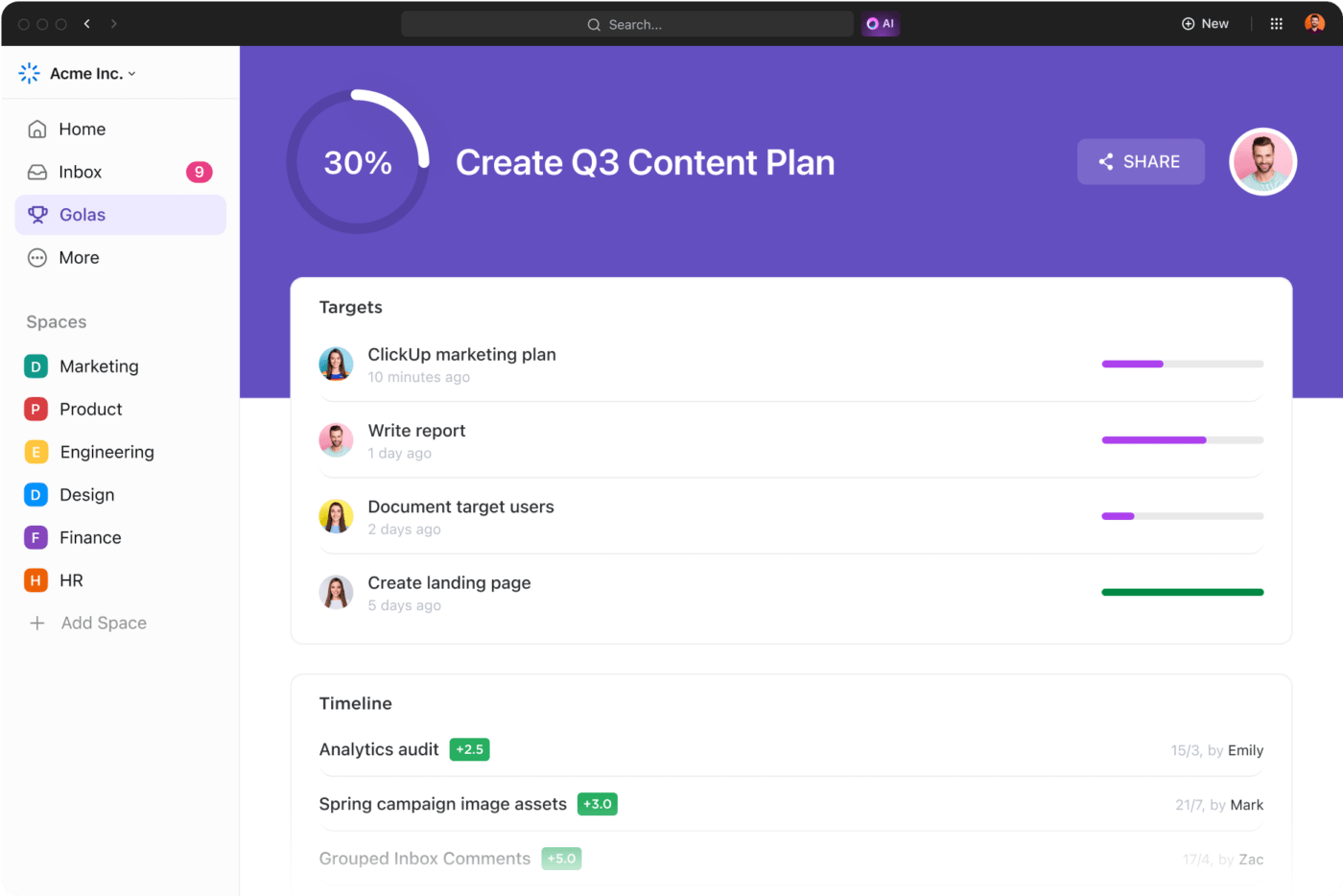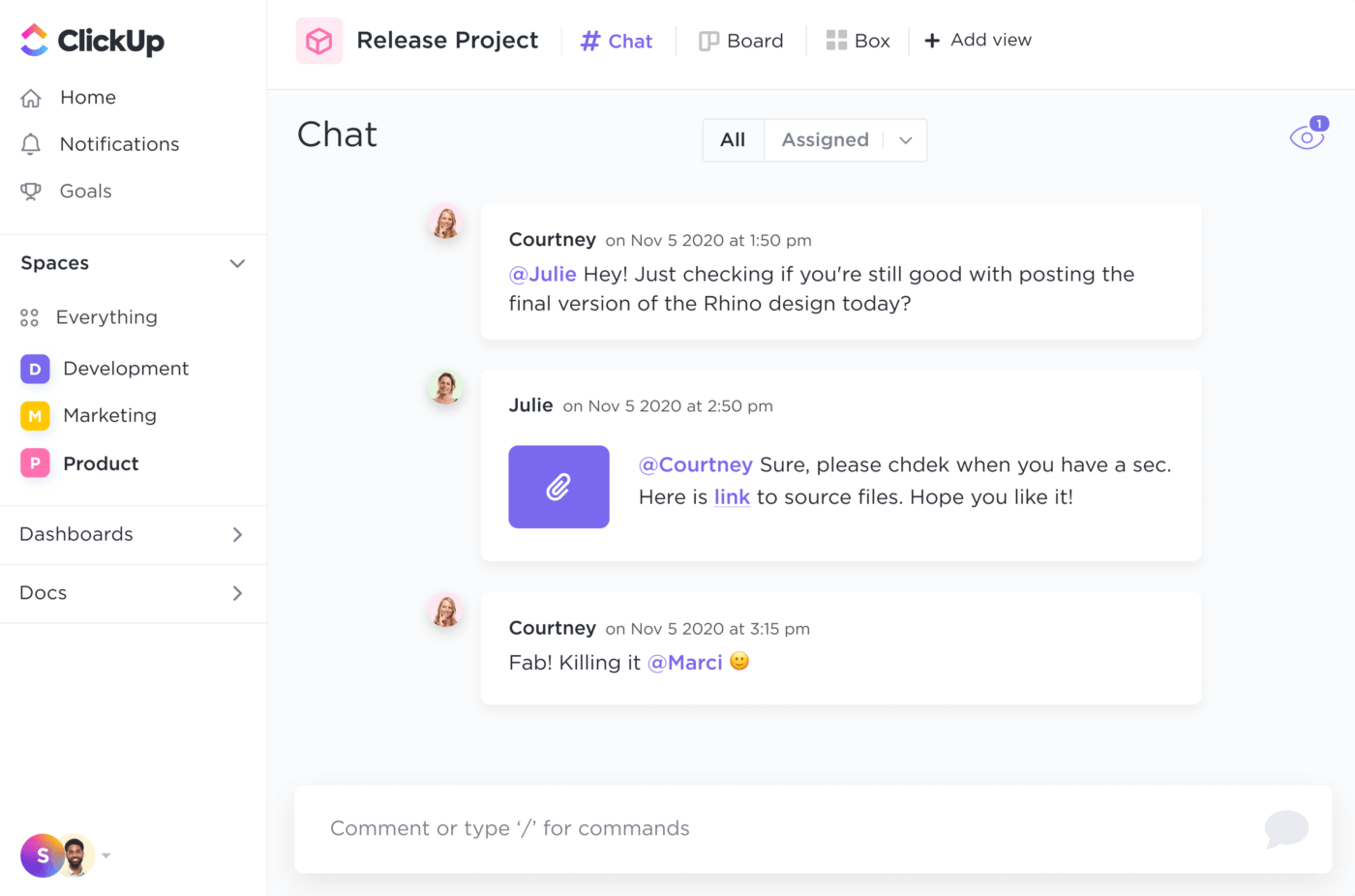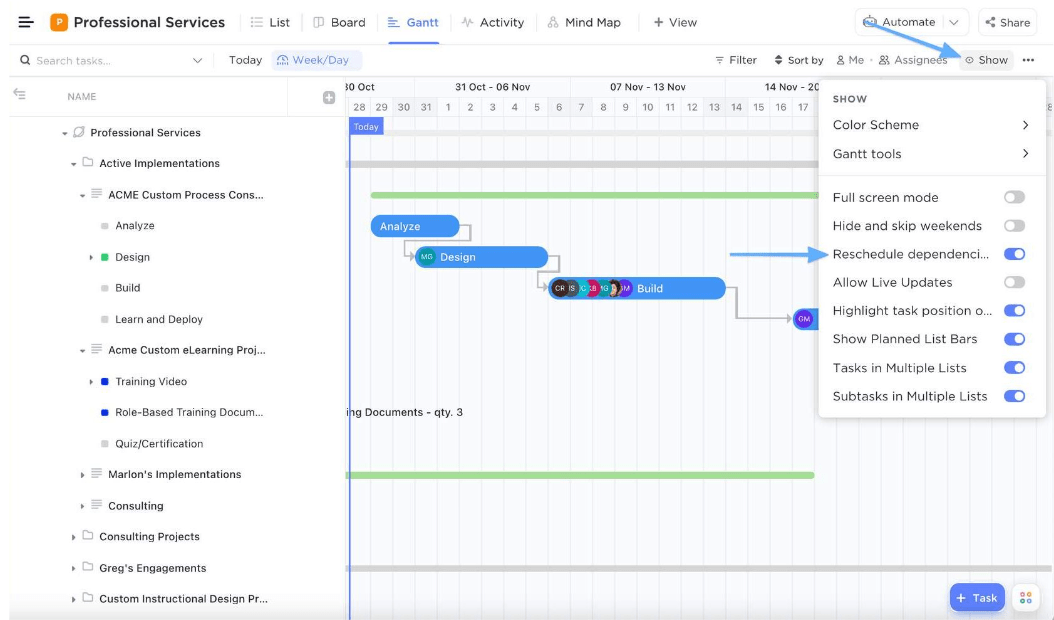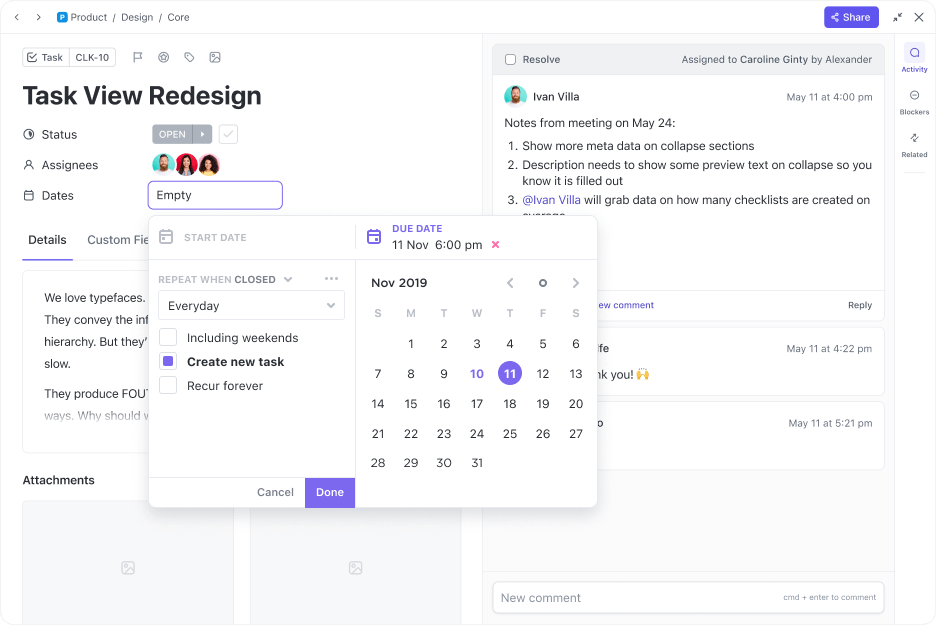Step-by-Step Guide: Building a Technology Roadmap (with Examples)

Sorry, there were no results found for “”
Sorry, there were no results found for “”
Sorry, there were no results found for “”
When was the last time you checked how many tools and applications your organization uses? If it’s been a while, we suggest doing this activity now.
You might realize that as the business landscape evolved, you added many new technologies and tools to keep up with the trend. Some of your older tools might no longer be in use, or worse, different teams might be using different paid tools for the same thing.
A technology roadmap ensures that this doesn’t happen.
A well-crafted technology roadmap serves as your North Star, guiding your organization through complex innovation and digital transformation. It’s a strategic blueprint that outlines your technology initiatives, aligns them with business objectives, and ensures efficient resource allocation.
In this blog, we’ll explain technology roadmaps and provide a step-by-step guide to creating one for your enterprise.
A technology roadmap or an IT system roadmap is a strategic document that outlines the technology solutions and initiatives an organization must implement over time to achieve its business objectives. It is a visual representation of your technology journey, highlighting key milestones, dependencies, and resource requirements.
By cataloging this journey, your technology teams and management can define a clear path forward, helping you align your investments with your long-term vision. A technology roadmap links your IT requirements and business goals, bringing your development, project management, and other teams on the same page.
A technology roadmap usually includes the following elements:
Given the constant evolution and changes in the technological landscape of an organization, a technology roadmap helps provide a strategic framework to update existing systems or tools and make them future-ready. A well-outlined technology roadmap is a critical tool to help you:
Depending on the specific goals and needs of your organization and team members, you may use varying tools within your organization. These can be classified based on the use case, including:
An IT roadmap or systems roadmap details the strategic planning and implementation of IT initiatives across an organization. It includes infrastructure upgrades, cybersecurity measures, software deployments, and other IT-related projects.
Software development teams, IT managers, and CIOs use an IT systems roadmap to ensure that the organization’s IT capabilities are aligned with its business goals and future-proof.
The product roadmap is one of the most common types in this category. It deals with the company’s suite of software or products and outlines the key features, improvements, and technological advancements they will implement to meet customer needs and market demands.
It is particularly useful to product managers and development teams, as it helps to prioritize features and coordinate cross-functional efforts.
Here’s ClickUp’s own product roadmap that features on our website as well.
When technologies play a significant role in a company’s operations, a technology-specific roadmap serves an essential purpose. It guides the adoption and successful implementation of a particular technology within an organization, which can include emerging technologies like artificial intelligence (AI), blockchain, or the Internet of Things (IoT), to support specific business functions or processes.
A strategic roadmap or marketing roadmap provides a high-level overview of how technology initiatives will support the broader business strategy. It focuses on long-term goals, such as entering new markets, improving customer experience, or achieving operational excellence.
Executive leadership or marketing and sales teams often use these technology roadmaps to ensure that technology investments align with the company’s vision and growth objectives.
Once you’ve identified the type of technology roadmap that best suits your business outcomes, the next step is to start building it. Here’s how you can get started:
The first step in building a technology roadmap is to identify and clearly define your strategic objectives. These should be closely tied to your organization’s overall business goals and outline what you aim to achieve through your technology initiatives.
To help you identify the strategic direction for your technology roadmap, you should:

Consider ClickUp Docs to document all your strategic activities and goals in one document. This tool helps you consolidate your documents, wikis, and knowledge bases on one platform.
Using this specialized documentation feature, you can collaborate with other stakeholders in real time, connect documents to workflows and tasks, and securely share information with anyone on the internal team or outside.
Once you’ve identified your strategic objectives, it’s time to define specific goals. These should be more granular and provide a path to your broader vision. Here’s how you can turn objectives into action:

Define and monitor your goals using ClickUp Goals, a unique ClickUp feature that lets you add all your activities related to a particular goal, giving you a clear vision of the timelines, targets, and tasks.
This step ensures that everyone involved knows exactly what needs to be accomplished and how success will be measured.
A technology roadmap should be accessible to various stakeholders, including executives, IT professionals, and business users. Therefore, gather input from your internal teams to ensure that the roadmap aligns with their needs and expectations.

To effectively communicate and gather input from your teams, use the ClickUp Chat view. This feature allows cross-functional teams to easily collaborate and discuss their business priorities on a shared platform. By bringing all the scattered conversations under one roof, you can:
With your objectives and goals in place and stakeholder input gathered, the next step is to set up the major themes of your technology strategy and roadmap. These themes represent the overarching areas of focus that will guide your technology initiatives over time.
For example, if your technology roadmapping is focused on improving customer engagement, the theme of your technology implementation could be ‘Enhancing Customer Interaction Channels.’ Under this theme, you may include initiatives such as implementing a new CRM system, developing a mobile app, and integrating AI-driven customer support tools.
Once your technology roadmap is aligned with a particular theme, it is time to communicate it with all the relevant stakeholders. Sharing the roadmap allows everyone involved to see the strategic direction, understand their roles, and collaborate to achieve the outlined goals.
Securely share your roadmap with the relevant stakeholders with custom view and edit permissions in ClickUp.

To quickly understand and communicate project timelines, you may even use the ClickUp Gantt Chart view, which lets you build Gantt charts using its powerful drag-and-drop feature. This allows you to visualize project workflows, track activities in real time, and manage dependent tasks using a simplified view.
With the roadmap shared and understood by all key stakeholders, it is time to allot responsibilities and implement the initiatives. Clearly defined roles and responsibilities ensure that the technology roadmap is executed efficiently and that progress is made according to plan.

You can use a process mapping tool like ClickUp to break down initiatives into actionable tasks, set deadlines, and monitor progress. With ClickUp Tasks features you can assign tasks to team members, set priorities, and track completion status, ensuring that everyone knows what they need to do and by when.
Technology roadmaps are not just a one-time affair but living, breathing documentation that needs continuous updates and monitoring. As business operations evolve, technology advances, and new challenges arise, you should update your roadmap to reflect these changes. To continuously monitor and update your roadmap, you should:

To gather the information for these reviews, consider software development project management tools like ClickUp, which provides live reports and dashboards. ClickUp Dashboards provides a 360-degree view of your entire project and priorities, offering a customizable view of all the key metrics and information. This allows you to identify areas requiring attention and make data-driven decisions quickly.

With the ClickUp Kanban Board, you can create an end-to-end visualization of your tasks. Customize columns, drag tasks through different phases, and add subcategories and blockers to track processes in the Kanban board. This is a great way to easily share updates with your team while each team member understands how their activity impacts the overall project.
Now that we’ve covered the process of creating technology roadmaps, let’s also see how to manage this quickly and efficiently.
ClickUp offers several roadmap templates to help you get started quickly and efficiently. Each template is designed to cater to specific needs, ensuring that your technology roadmap is both comprehensive and tailored to your organization’s goals.
If you need generic or marketing technology roadmaps, the ClickUp Project Roadmap Template is apt for your needs. This template provides a clear overview of project timelines, milestones, and deliverables, helping you keep everything on track.
This roadmap template can help you with:
For IT and development teams, ClickUp’s Technology Roadmap Template is the ideal option for planning all technology initiatives over a defined period. This template provides a structured layout for organizing and visualizing technology projects, from initial planning stages to final implementation.
Thus, the template is perfect for:
ClickUp Agile Team Roadmap Template is specifically designed for teams that follow Agile methodologies. This template helps you outline your Agile projects, track sprints, and manage backlogs, all within the context of your overarching technology roadmap.
You can leverage this template for:
The ClickUp IT Teams Roadmap Template is tailored for IT departments looking to plan and manage their technology infrastructure and initiatives. It allows you to outline the critical IT projects that support your organization’s operations. Use it for:
By laying out a clear path for technology initiatives, a roadmap aligns the entire organization toward shared objectives, optimizes resource allocation, and enhances communication among stakeholders. This provides the following benefits:
In a world where technology evolves at lightning speed, having a well-defined technology roadmap is crucial for staying ahead of the curve. It helps you plot a defined path for your tech initiatives that aligns perfectly with your strategic objectives and organizational goals.
ClickUp offers a comprehensive suite of tools, templates, and roadmap software features to help you build and manage your technology roadmap. With it, you can streamline your roadmap creation, enhance team collaboration, and ensure that your technology projects are set up for success from the start.
Ready to take your technology roadmap to the next level? Sign up to ClickUp today and achieve meaningful results with your technology roadmap.
© 2026 ClickUp